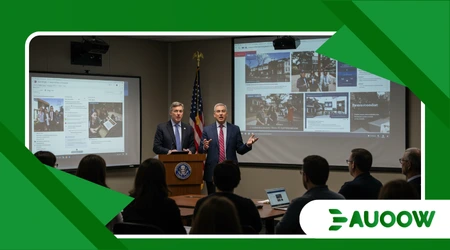How U.S. Federal Agencies Are Enforcing Web Accessibility in 2025

The scrutiny from U.S. Federal Agencies Are Enforcing Web Accessibility in 2025 through proactive regulation and significant legal actions. This shift marks a crucial pivot from reactive lawsuits to systemic, mandatory compliance.
This detailed analysis explores the specific mechanisms, new regulatory frameworks, and heightened judicial scrutiny defining the current era.
We examine how the Department of Justice (DOJ), the Department of Education, and other key agencies are using existing laws like the ADA and Section 508.
Understanding this evolving compliance framework is essential for mitigating risk and ensuring equal access for all. The cost of non-compliance has never been higher.
The Regulatory Foundation: ADA and Section 508 Evolution
Web accessibility enforcement relies on two main legislative pillars. The Americans with Disabilities Act (ADA) and Section 508 of the Rehabilitation Act provide the legal teeth. Their application in the digital realm continues to solidify.
The DOJ and the Expanding Scope of ADA Title III
The Department of Justice (DOJ) remains the primary driver of private sector enforcement through ADA Title III. This section prohibits discrimination based on disability in “places of public accommodation.” In 2025, the DOJ consistently interprets “places” to include commercial websites and mobile apps.
Crucially, the DOJ increasingly uses investigative sweeps targeting specific industries with documented high rates of non-compliance. These proactive investigations supersede individual lawsuits.
Recent targets have included major retailers and financial services companies, underscoring that U.S. Federal Agencies Are Enforcing Web Accessibility in 2025 through targeted scrutiny.
Furthermore, the lack of a dedicated, final Web Content Accessibility Guidelines (WCAG) version in the ADA has not slowed the DOJ. They consistently rely on WCAG 2.1 A and AA as the operational standard, making technical compliance a non-negotiable expectation for all covered entities.
++ Monitoring Misinformation: The Role of Google Trends in Public Policy Research
Section 508 and the Federal Vendor Mandate
Section 508 mandates that federal agencies’ electronic and information technology must be accessible to people with disabilities. This mandate directly impacts every company doing business with the federal government.
The General Services Administration (GSA) and the Access Board enforce Section 508. In 2025, vendor contracts require rigorous, audited compliance with WCAG 2.0 or 2.1 A/AA standards for all submitted digital products. This creates a powerful financial incentive for accessibility.
Any firm seeking lucrative government contracts must demonstrate that U.S. Federal Agencies Are Enforcing Web Accessibility in 2025 and they are ready to meet the standard.
Non-compliant federal technology vendors face contract termination and exclusion from future bidding. This commercial pressure forces market-wide adoption of best practices, benefiting the entire digital ecosystem.

Proactive Enforcement Mechanisms and Data-Driven Fines
The age of waiting for a single plaintiff to file suit is over. Federal enforcement is now driven by data, public feedback, and systemic audits.
Also read: The Americans with Disabilities Act (ADA) at 35: Achievements and Gaps
The Role of the Department of Education’s Office for Civil Rights (OCR)
The OCR is an unexpected but formidable player in web accessibility enforcement, especially in the public sector. They handle complaints against state and local government entities, as well as educational institutions, under ADA Title II.
The OCR uses compliance reviews to assess entire university systems or school districts. If a university website or online learning platform is inaccessible, the OCR can issue a finding that mandates immediate, costly remediation, often under strict timelines.
The Department of Education’s enforcement sends a clear message that learning platforms must be fully accessible. This is a critical area where U.S. Federal Agencies Are Enforcing Web Accessibility in 2025.
Example: The OCR recently settled a case with a major state university system regarding inaccessible student portals and course management systems. The settlement agreement required the system to spend millions on remediation and ongoing monitoring, setting a high precedent for public sector compliance.
Read more: Is the Right to Assistive Technology a Human Right?
The Financial Services Sector and the FDIC
Another federal body increasing its enforcement is the Federal Deposit Insurance Corporation (FDIC) for banks, and similar regulatory bodies for financial institutions. While not an accessibility agency per se, the FDIC views accessibility non-compliance as a consumer protection risk.
If a bank’s website or mobile app is inaccessible, it creates a risk of unequal access to essential services (account management, bill pay).
The FDIC can mandate remediation as part of their routine regulatory compliance reviews. This is a powerful, non-ADA-specific lever demonstrating that compliance is now integrated across regulatory domains.
The Litigation Landscape: Judicial Scrutiny and AI Audits
While agencies drive systematic compliance, the courts continue to refine the legal interpretations, often resulting in expensive settlements for non-compliant businesses.
The “Testing Standard” and Automated Audits
The current trend in federal litigation is the increased reliance on technical audit evidence. Plaintiffs and the DOJ frequently submit results from automated accessibility checkers and specialized AI testing tools.
This shifts the burden of proof. The initial report highlighting clear WCAG failures is now a powerful preliminary argument against the defendant.
The defense strategy, therefore, must involve routine, proactive manual and automated auditing. Simply waiting for an audit failure to be presented in court is no longer viable.
Businesses must adopt a “Shift Left” strategy, integrating accessibility testing into every stage of the development lifecycle. This is the only realistic way to combat the litigation risk posed by advanced AI testing.
Statistic: According to a 2024 report by a national defense law firm specializing in digital accessibility, 89% of all demand letters sent to corporations now include automated audit reports as primary evidence. This starkly illustrates the immediacy of the threat.
Policy Enforcement Table: Agency, Law, and Target
Understanding who enforces what, and under which law, is crucial for any compliance strategy.
| Federal Agency | Primary Law Enforced | Primary Enforcement Target | Key Compliance Standard |
| Department of Justice (DOJ) | ADA Titles II & III | Private Businesses (Web/Apps), State/Local Govt. | WCAG 2.1 A/AA |
| Dept. of Education (OCR) | ADA Title II, Section 504 | Educational Institutions, Public Schools, Universities | WCAG 2.1 A/AA |
| General Services Admin. (GSA) | Section 508 | Federal Agencies and Government Contractors | WCAG 2.0/2.1 A/AA |
| Federal Communications Commission (FCC) | CVAA (21st Century Comm.) | Telecommunications, Video Programming Providers | Specific Criterial for Video/Comm |
This table confirms the multi-agency approach to compliance, highlighting how U.S. Federal Agencies Are Enforcing Web Accessibility in 2025.
Conclusion: Compliance as a Core Business Function
The era of ignoring web accessibility, hoping to avoid a lawsuit, is over. The fact that U.S. Federal Agencies Are Enforcing Web Accessibility in 2025 through coordinated, data-driven efforts means compliance is now a mandatory operational risk factor.
From the DOJ’s industry sweeps to the OCR’s educational mandates and the GSA’s contract requirements, the net of accountability is wider and stronger than ever.
The cost of technical remediation after an enforcement action far exceeds the cost of proactive development. Web accessibility is not charity; it’s smart business, good public policy, and a legal requirement.
Is your organization prepared to meet the digital mandate, or are you waiting for the inevitable federal audit? Share your compliance challenges or best practice strategies in the comments below.
Frequently Asked Questions (FAQs)
Q: Does my small business really need to worry about the ADA if I don’t have a physical location?
A: Yes, absolutely. The courts and the DOJ consistently rule that the ADA’s Title III applies to a business’s website if the site serves as a “place of public accommodation” by facilitating commerce or providing public-facing services.
This includes nearly all e-commerce sites, booking platforms, and service providers. The idea that a physical presence is needed is outdated.
Q: What is the single biggest technical compliance error cited by the DOJ?
A: The most frequent and easily detectable failure is the lack of proper alternative text (alt text) for images. Screen readers rely on alt text to convey the visual information to users who are blind or visually impaired.
When U.S. Federal Agencies Are Enforcing Web Accessibility in 2025, missing or inaccurate alt text is often the first failure cited in an audit report because it is easily detectable by automated tools.
Q: Is WCAG 2.2 mandatory now?
A: While WCAG 2.2 was finalized, most U.S. Federal Agencies Are Enforcing Web Accessibility in 2025 primarily based on WCAG 2.1 Level AA. However, due to the legislative process, many agencies are expected to formally adopt 2.2 or even the forthcoming 3.0 standard soon.
Best practice is to remediate to WCAG 2.1 now and immediately plan for the few new requirements introduced in WCAG 2.2.
